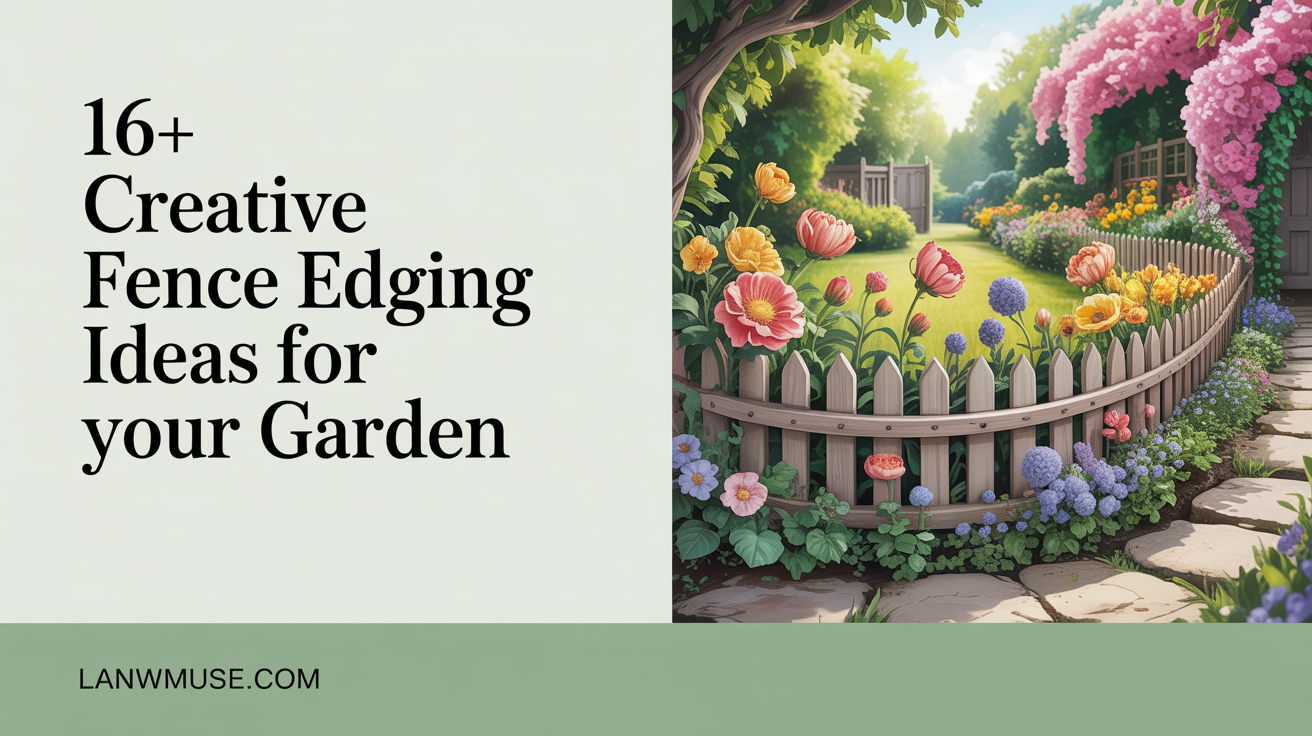Transforming your garden into a stunning outdoor sanctuary isn’t just about flowers and furniture. Fence edging can define the space, add aesthetic appeal, and even serve functional purposes like keeping weeds out or preventing soil erosion. Below are 16+ creative fence edging ideas, each offering unique charm and utility. Let’s explore how you can elevate your garden with these inspiring border solutions.
1. Recycled Rubber: Durable and Eco-Friendly Charm
Recycled rubber edging offers a sustainable and versatile option for garden borders. Made from repurposed tires, this material is not only environmentally friendly but also highly durable and weather-resistant. It bends easily, making it perfect for gardens with curves or irregular shapes.
One of the key benefits of recycled rubber is its safety. It’s soft and flexible, making it ideal for families with kids or pets. Installation is typically straightforward—many options come with stakes or connectors that make setting them in place a breeze. The look can range from faux stone finishes to sleek black strips, providing aesthetic variety for different garden styles.
Styling tip: Use recycled rubber edging around play areas, vegetable beds, or curved flowerbeds for a clean, professional look that’s also eco-conscious. It’s also low-maintenance, requiring only occasional cleaning and inspection.
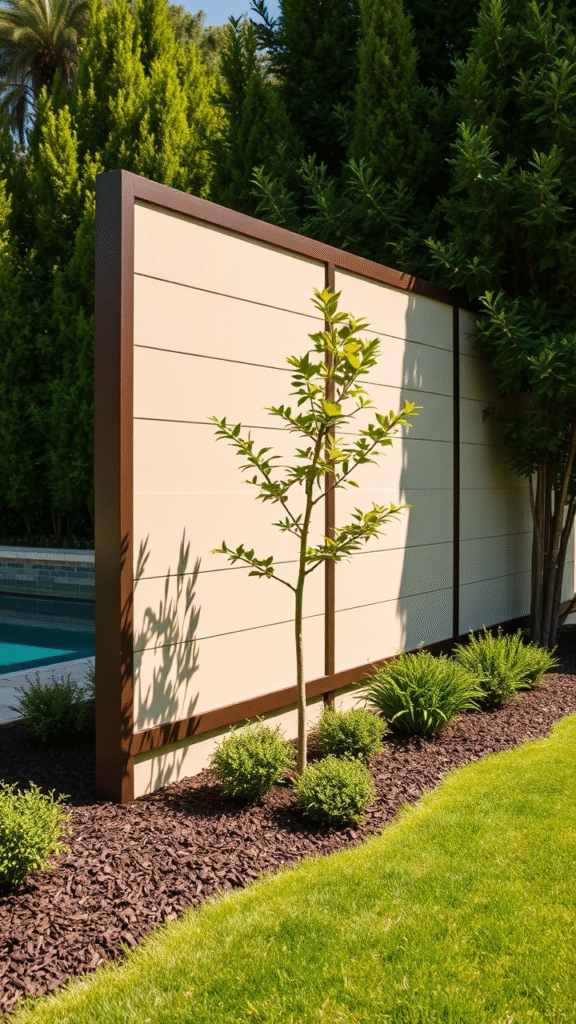
2. Tiered Planting: A Living, Layered Look
Tiered planting as a fence edging strategy introduces a lush, vibrant border using layers of plants of varying heights. This technique is both decorative and functional, offering visual interest while maximizing planting space.
Begin by arranging taller plants such as ornamental grasses or lavender at the back, with medium plants like marigolds or salvia in the middle, and ground covers like creeping thyme or alyssum at the front. This approach not only looks organized but also allows for a natural flow from fence to path.
Benefits include biodiversity, pollinator attraction, and a visually soft transition between fence and garden. Tiered planting is especially effective in cottage-style or English gardens, where overflowing greenery enhances the charm.
DIY Tip: Use planter boxes or built-in terraces along your fence line to create elevation. Combine annuals and perennials for year-round interest.
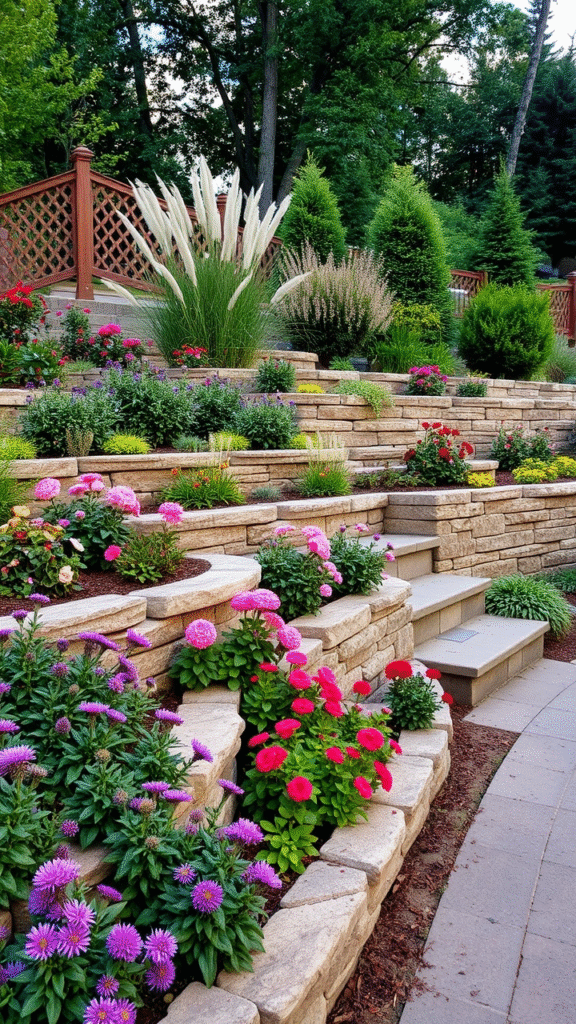
3. Wooden Wonders: Rustic Appeal and Timeless Charm
Wooden edging never goes out of style. Whether it’s reclaimed timber, treated logs, or picket fencing, wood brings a warm, organic feel to any garden. It complements a wide range of plants and is suitable for traditional and rustic garden themes.
Options include horizontal planks for a modern look, vertical stakes for a classic picket style, or log rolls for a more natural aesthetic. Wooden edging can be stained, painted, or left to weather naturally.
Benefits include affordability, easy customization, and eco-friendliness—especially when using reclaimed materials. However, it does require maintenance, such as sealing or treating for moisture and pests.
Styling Tip: Pair wooden edging with mulch or bark pathways for a cohesive, earthy feel.
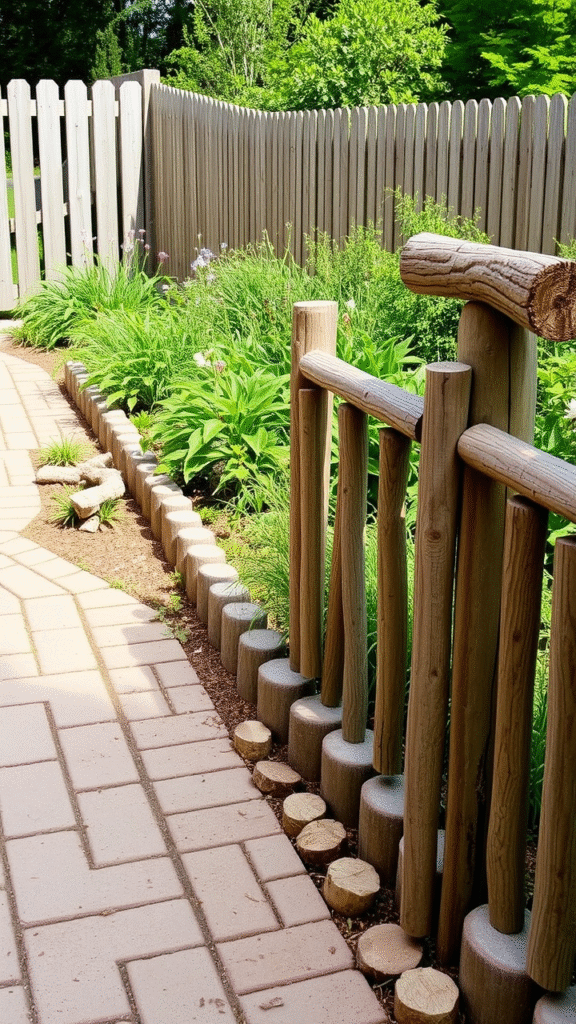
4. Gravel Simplicity: Minimalist and Low Maintenance
Gravel offers a clean, contemporary edge that’s ideal for minimalist gardens. It can act as both an edging material and a functional pathway component. Its neutral tones and texture help accentuate colorful flowers or structured hedges.
To install, dig a shallow trench along the fence and fill it with gravel of your choice—pea gravel, crushed stone, or river rock. You can use metal or plastic edging to keep the gravel contained.
Benefits include excellent drainage, weed suppression (with landscape fabric), and low cost. It’s perfect for xeriscaped gardens or areas prone to heavy rainfall.
Styling Tip: Choose gravel in contrasting colors to your plants or pavers for a striking visual impact.
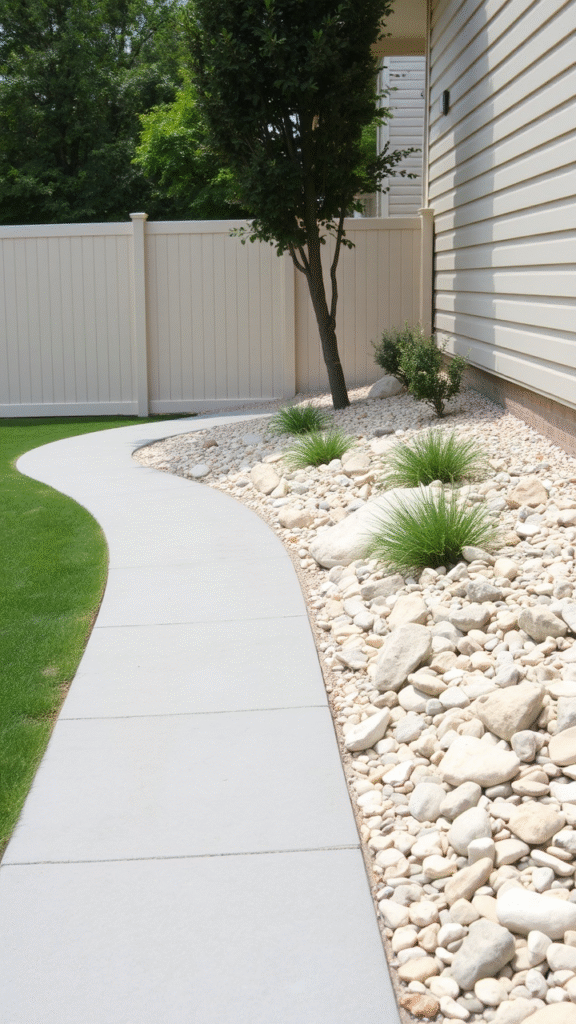
5. Paver Edging: Classic and Customizable
Paver edging combines structure with style. Available in various shapes, colors, and materials—such as brick, concrete, or stone—pavers provide a polished, durable border for any garden space.
Lay pavers in a straight or curved line along your fence to define flower beds or vegetable gardens. They can be installed flush with the ground or slightly raised for emphasis.
Advantages include long-lasting durability, easy mowing along the edge, and design versatility. With proper preparation and base materials, they’re also relatively easy to install.
Styling Tip: Use alternating paver colors or shapes to create a patterned border that doubles as a design feature.
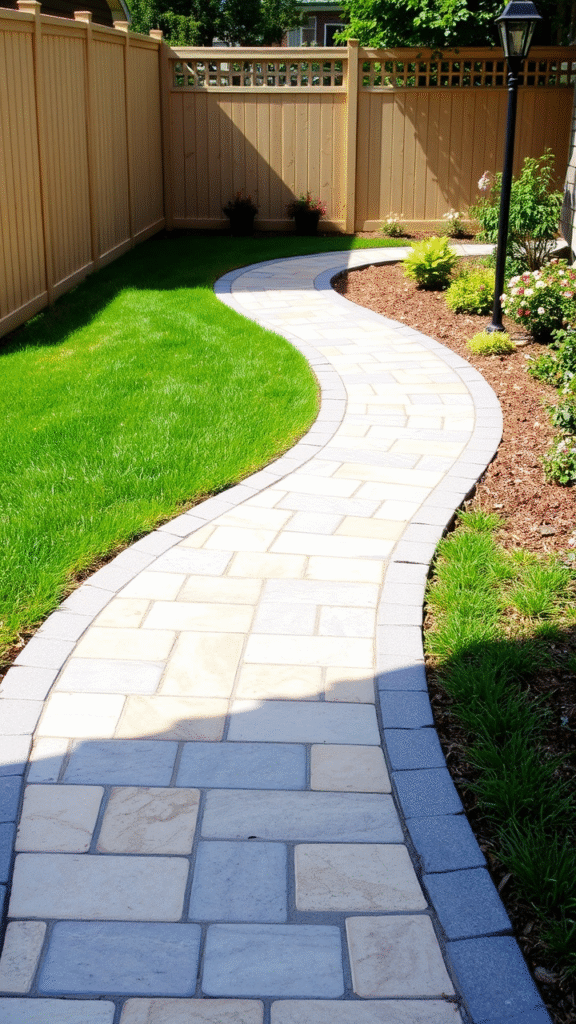
6. Brick Beauty: Vintage Elegance and Structure
Brick edging brings a timeless, old-world charm to your garden. It’s especially fitting for English gardens, formal landscapes, or traditional homes. Bricks can be laid flat, tilted diagonally, or stacked to achieve different visual effects.
Their robust nature makes them perfect for containing soil and mulch, and they offer a visually pleasing contrast to greenery. Bricks are also great for integrating with paths and patios.
Installation typically involves trenching, laying a sand base, and aligning the bricks with or without mortar. This option is both decorative and highly functional.
DIY Tip: Salvaged bricks can add character and reduce cost. Mix aged and new bricks for a unique blend of textures.
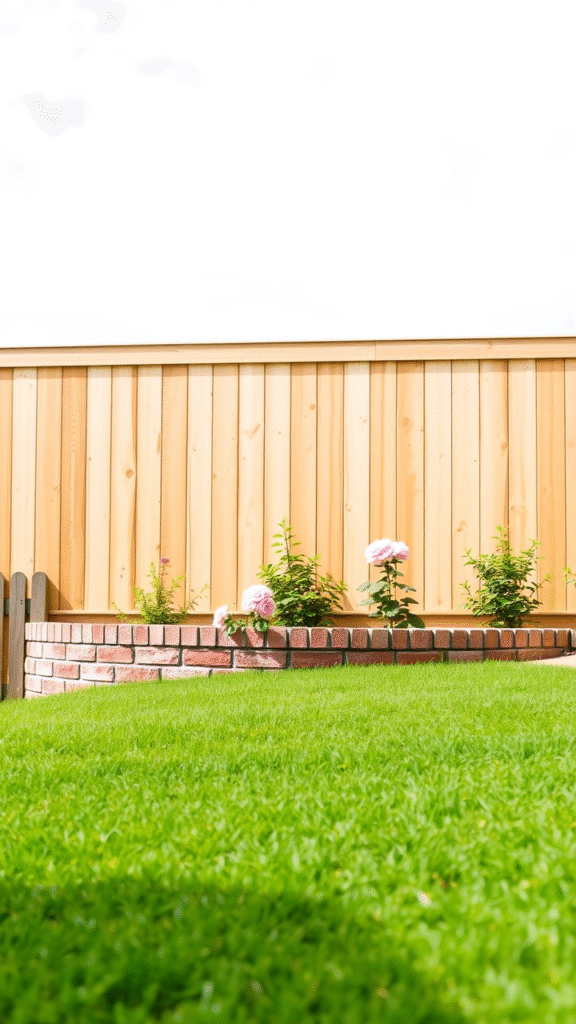
7. Stone Elegance: Natural and Sophisticated
Using natural stone as a fence edging element adds instant elegance. Whether you choose slate, flagstone, or fieldstone, these materials provide a grounded, organic feel that complements virtually any garden style.
Stones can be stacked dry or set in mortar for more permanent installations. They’re excellent for sloped gardens where retaining capabilities are needed, and they blend seamlessly with natural landscapes.
Benefits include durability, minimal maintenance, and a high-end appearance. They also weather beautifully over time.
Styling Tip: Combine stones of varying sizes for a more rustic, free-form edge or use uniform cuts for a sleek, modern look.
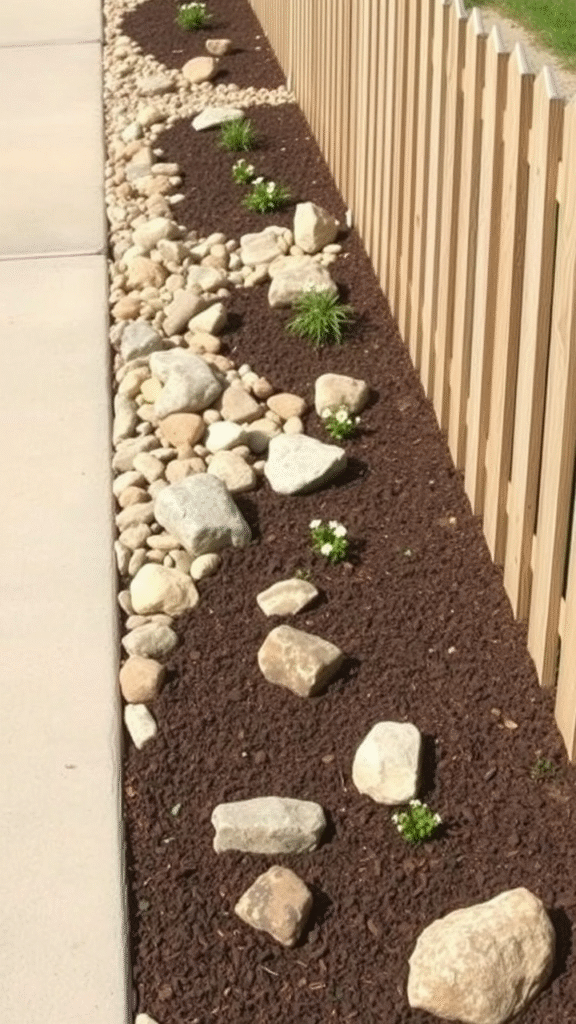
8. Pebble Moat: Decorative and Practical
A pebble moat is a charming way to edge your garden while also improving drainage and deterring pests. This technique involves creating a narrow trench along the fence line and filling it with pebbles or small river rocks.
This type of edging works well with both modern and rustic designs. The pebbles act as a buffer, preventing water runoff and discouraging weed growth. They also make it difficult for crawling pests to cross into plant beds.
Installation is simple: dig a trench about 4–6 inches deep and wide, lay landscape fabric, and fill with your chosen pebbles. Choose stones in neutral or earthy tones to blend naturally with the surrounding landscape.
Styling Tip: Add solar lights or garden gnomes along the pebble line to enhance both function and charm.
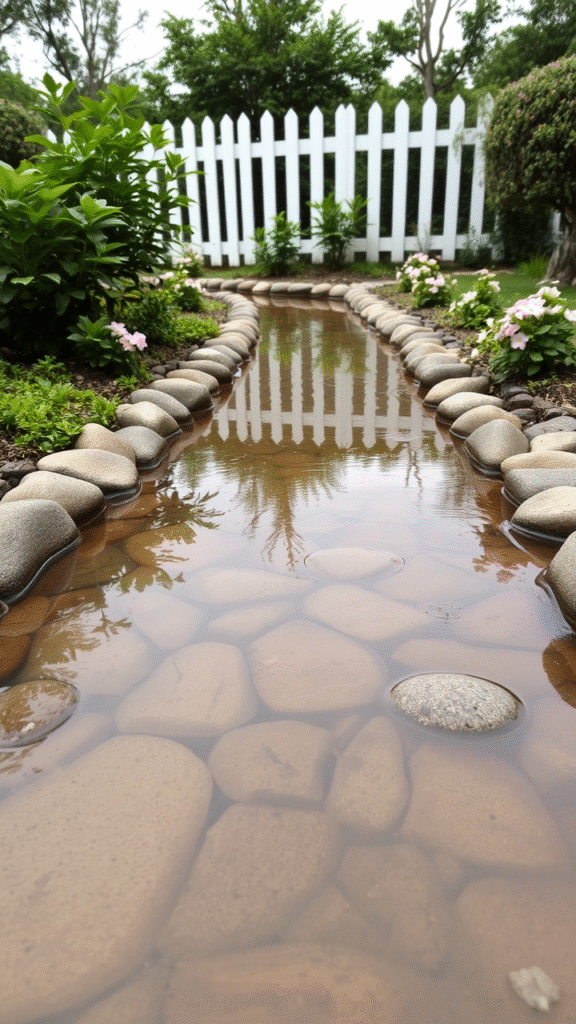
9. Bamboo Bliss: Tropical and Sustainable
Bamboo offers a sustainable, lightweight, and exotic fencing solution that doubles as garden edging. Whether used as mini fences, rolled panels, or upright stakes, bamboo adds an organic, tropical feel to the space.
Ideal for Asian-themed gardens, bamboo is naturally resistant to pests and can be treated to withstand weather. It’s also flexible in terms of design—you can create neat, short barriers or woven patterns depending on your creativity.
Eco-conscious gardeners will appreciate bamboo’s fast growth and renewability. Combine it with river stones and ornamental grasses to complete the tropical vibe.
Maintenance involves occasional sealing or treatment to prolong its life, especially in humid or rainy climates.
Styling Tip: Use split bamboo canes for a lower edging that subtly defines plant beds without blocking views.
10. Floral Fantasy: Colorful Living Edges
Turn your garden fence into a living canvas with floral edging. This approach involves planting vibrant flowers right along the fence line, creating a border that evolves with the seasons.
Choose a mix of perennials and annuals for continuous blooms. Popular options include petunias, zinnias, geraniums, and snapdragons. You can also add climbing flowers like morning glories or clematis to the fence itself for vertical interest.
Floral edging offers the dual benefits of beauty and biodiversity. It attracts pollinators like bees and butterflies and provides a sensory experience with varied colors and fragrances.
DIY Tip: Use planter boxes attached to the fence to control growth and simplify watering.
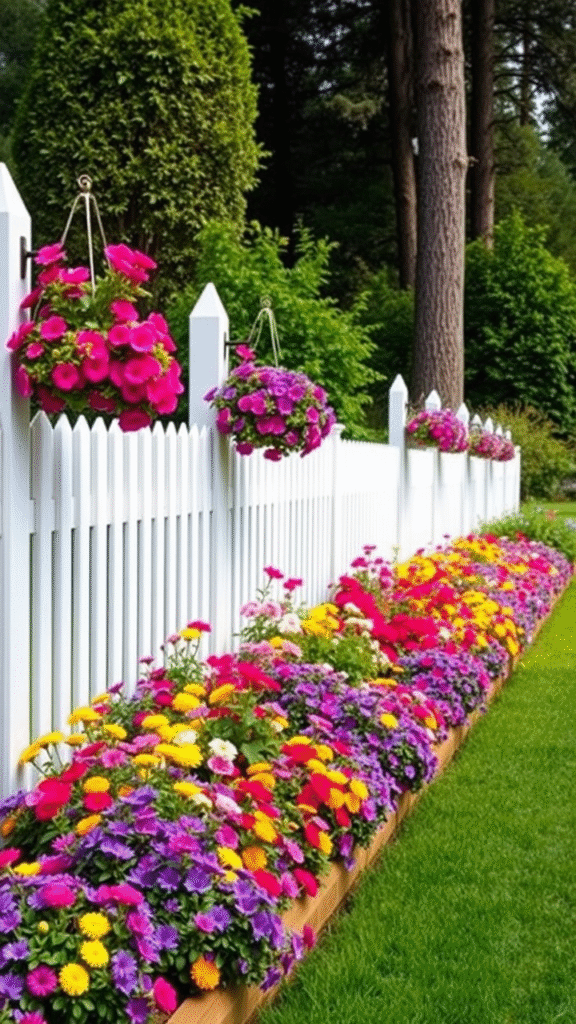
11. Woven Willow: Artisanal and Eco-Friendly
Woven willow edging brings a rustic, handcrafted touch to garden borders. Made by interlacing thin willow branches between stakes, this edging is flexible and follows curves naturally, making it perfect for organic garden layouts.
Willow is biodegradable, affordable, and visually appealing. It fits beautifully in cottage gardens, herb beds, or raised beds where a natural look is preferred.
Installation involves driving wooden stakes into the ground and weaving the willow rods between them. This edging can be built to various heights depending on your needs.
Maintenance is minimal—just ensure the willow is treated for outdoor use to extend its life.
Styling Tip: Line the base with mulch or flowers to soften the edges and enhance the natural vibe.
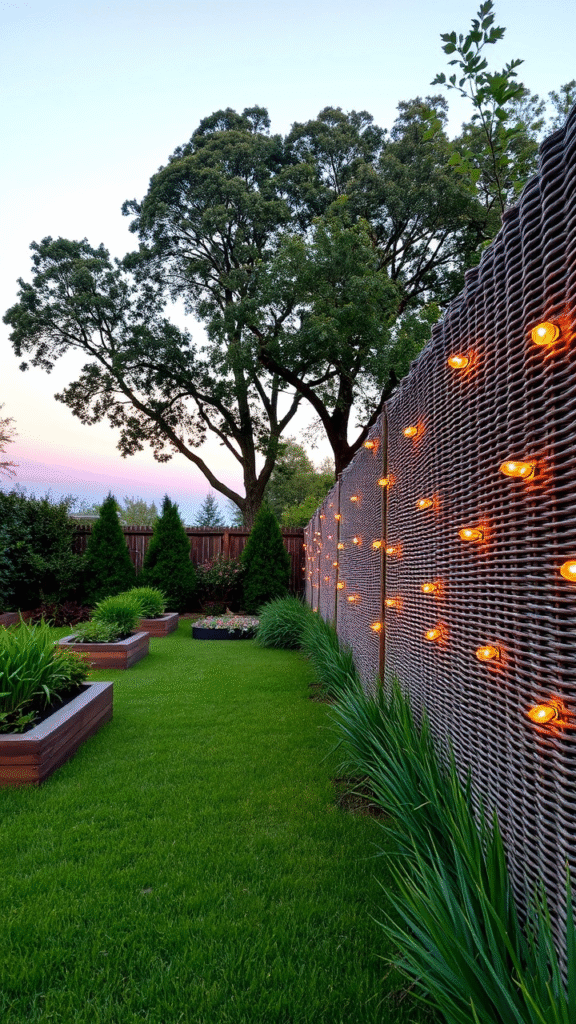
12. Living Borders: Functional and Green
Living borders are one of the most eco-friendly and visually enriching ways to edge your garden. This approach uses dense, low-growing plants to form a natural fence line that softens hardscapes and encourages biodiversity.
Popular choices include boxwood, lavender, creeping thyme, and dwarf ornamental grasses. These plants can be trimmed for neat lines or allowed to grow freely for a more organic feel. They provide texture, color, and seasonal interest, all while supporting pollinators and other beneficial insects.
In addition to being beautiful, living borders help prevent soil erosion, act as a natural weed barrier, and can even contribute to moisture retention. They’re especially effective in creating smooth transitions between different garden zones or paths.
Maintenance involves periodic trimming and occasional mulching or fertilizing, depending on plant type. Living borders also grow and change over time, offering a dynamic aspect that synthetic materials can’t replicate.
Styling Tip: Alternate flowering plants with evergreens to maintain interest year-round.
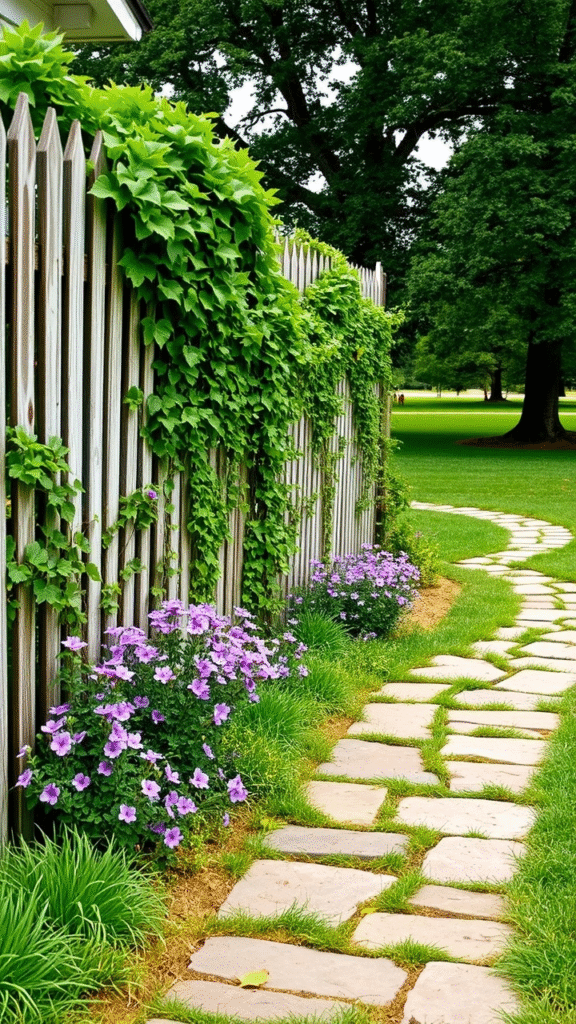
13. Concrete Boldness: Contemporary and Bold
Concrete edging delivers a striking, modern aesthetic that’s both functional and long-lasting. Its clean lines and solid construction make it ideal for contemporary gardens and urban landscapes.
Concrete can be poured in place for custom shapes, or you can use precast blocks or forms for quicker installation. You can also tint the concrete or imprint it with textures to mimic stone or add visual interest.
This type of edging creates a clear boundary between lawn and garden bed, helping prevent grass encroachment and making mowing easier. Its weight and solidity also make it excellent for retaining soil or mulch on sloped areas.
Concrete edging is weather-resistant and requires little to no maintenance, making it a great investment for those looking for durability and style.
Styling Tip: Combine concrete borders with minimalist planting schemes or ornamental grasses for a chic, streamlined look.
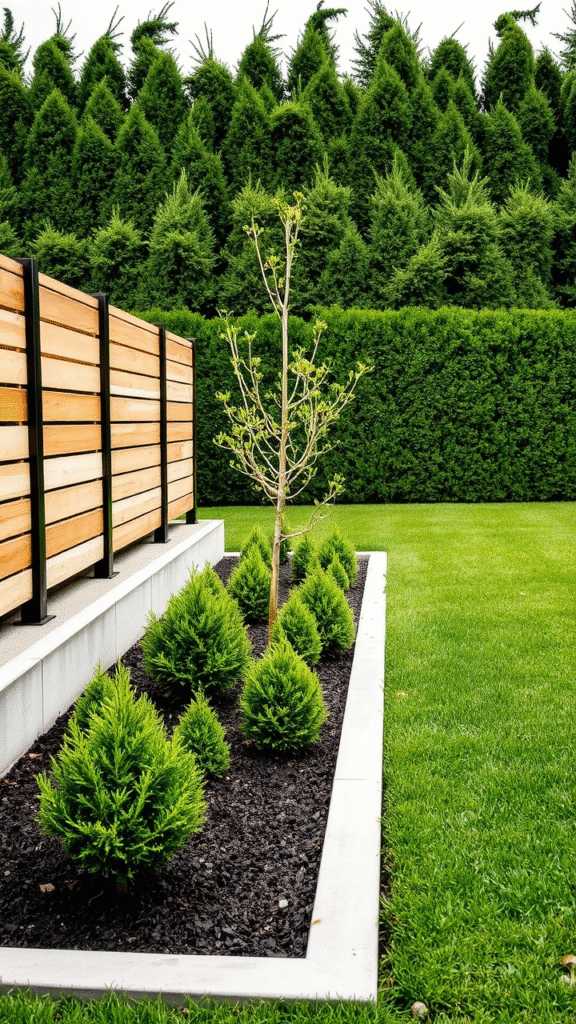
14. Shell Surprise: Coastal and Whimsical
Using seashells for garden edging adds a whimsical, beachy vibe that’s perfect for coastal gardens or playful outdoor spaces. Crushed shell mulch or whole shells can be used to define flower beds, paths, or fence lines.
This option is both decorative and functional—shells help with drainage, reflect sunlight, and break down slowly over time, enriching the soil with calcium. They also deter pests like slugs and snails.
To install, lay landscape fabric and edge restraints, then pour the shells in a neat line. You can also border the shell edge with stone or wood for added definition.
Shell edging is a conversation starter and brings a sense of escape to your garden, making it feel like a seaside retreat.
Styling Tip: Mix different sizes and types of shells, or combine them with sand and driftwood for an authentic beachside aesthetic.
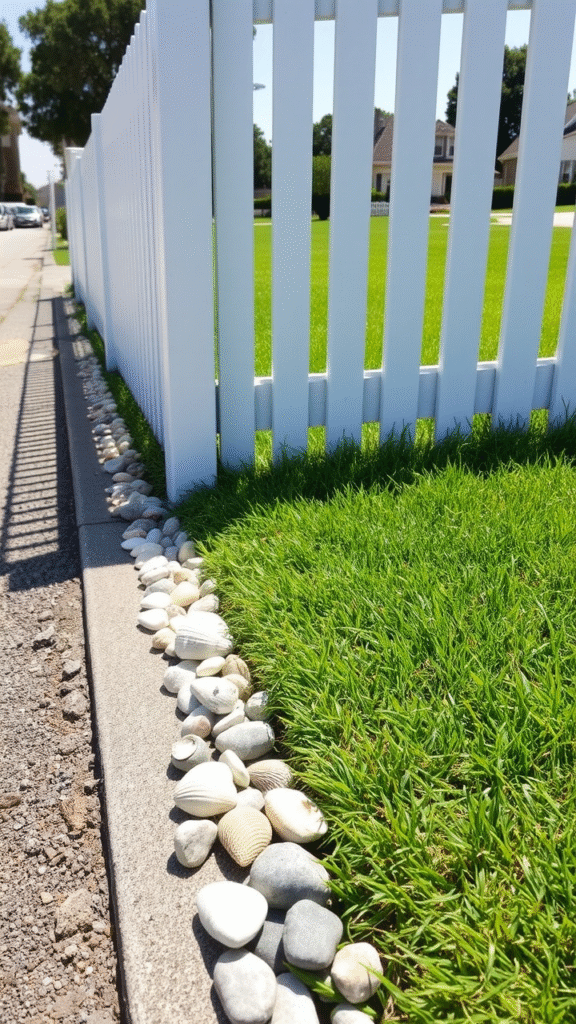
15. Planter Perfect: Stylish and Multi-functional
Using planters as edging transforms a simple garden border into a feature of its own. Planters can define spaces, provide height variation, and allow for mobile gardening—especially useful in smaller yards or rental properties.
Choose large ceramic pots, wooden boxes, or metal troughs and line them along the fence. Fill them with ornamental grasses, herbs, flowering plants, or even vegetables. This method brings in both beauty and utility.
Planters also allow for easy seasonal changes and experimentation. They’re ideal for people who love to redecorate their garden regularly without committing to permanent changes.
Styling Tip: Use matching or color-coordinated planters for a cohesive look, or mix styles for an eclectic edge.

16. Metal Modernity: Sleek and Industrial
Metal edging adds a modern, architectural element to garden borders. Materials like corten steel, aluminum, or galvanized iron offer clean lines and high durability. As they age, metals like corten develop a beautiful rusted patina, adding depth to the garden design.
This type of edging is particularly effective in contemporary or industrial-style gardens. It can be used to separate lawns from garden beds, create raised borders, or form curved and geometric shapes with precision.
Metal edging is also resistant to rot, pests, and weather, making it a low-maintenance yet stylish option. Installation typically involves anchoring thin metal strips into the ground along your desired edge line.
Styling Tip: Pair metal edging with gravel or concrete pavers for a sharp, high-contrast modern look.
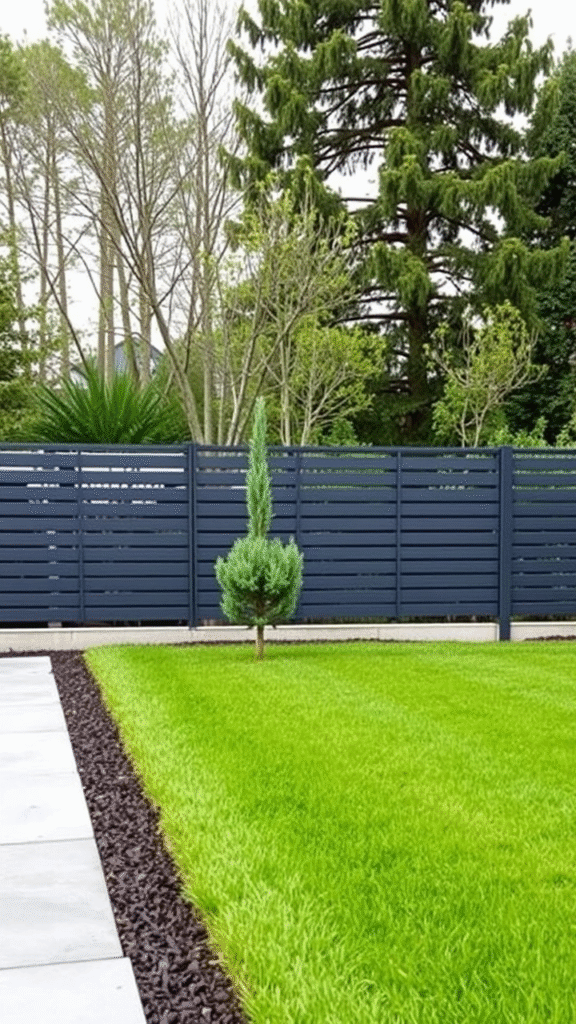
Conclusion: Mix, Match, and Personalize
With so many creative edging options available, the key is to find the one—or combination—that fits your garden’s personality and your practical needs. Whether you lean toward rustic charm, modern minimalism, or eco-conscious solutions, there’s a perfect border idea waiting for you. Don’t be afraid to mix materials or layer multiple styles to add depth and visual interest. After all, your garden is an extension of your home—make its boundaries as beautiful and unique as what’s within.

